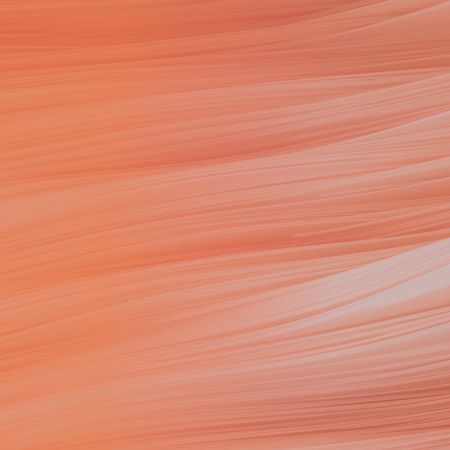

Acne is a common skin condition caused by clogging of pores. Pores are tiny openings around hair follicles, sweat glands, and oil glands. Those oil glands, called sebaceous glands, produce a specific type of oil, called sebum, which moisturizes our skin. High sebum excretion is the main reason acne progresses.
Acne starts when dead skin cells plug the pores and trap the sebum, causing pimples (AKA zits!) Acne-associated bacteria, called Propionibacterium acnes, flourish under these conditions, leading to pustules.
The clogged pores can lead to different forms of acne: red bumps, pustules, whiteheads, blackheads, and cysts.
Even after acne lesions clear up, they can remain pink or purple for weeks or months. With time, the color can turn blotchy brown, a condition called post-inflammatory hyperpigmentation or PIH.
Unfortunately, the healed acne lesion can leave a scar. Acne scars can vary from small indentations, small pits, sunken icepick scars, or raised marks. The scar can be tethered deep into the fat, and you can see why by the following illustration. (“Pathogenesis of Acne vulgaris” means “How common acne develops.”)
The psychological and emotional impact of the condition can be devastating. Treatment involves keeping pores unclogged, shedding dead skin cells, and killing the bacteria that cause acne. Just like getting in shape, the best results come with a home regimen paired with professional treatments.
The following active ingredients are the Big Stars to look for in acne products:
Here’s a quick overview of what a home regimen looks like:
Use a gentle cleanser no more than twice a day. Look for one that you tolerate with salicylic acid and benzoyl peroxide.
If your skincare medical professional prescribes one, apply at night only. Your skin may be redder than usual and dry as it gets used to the product. Discuss with your skincare professional if you need the dose or product adjusted.
Use twice a day to hydrate the skin—yes, even if you have acne.
Use benzoyl peroxide and/or salicylic acid on breakouts to clear your skin.
Inflammation from acne can lead to post-inflammatory hyperpigmentation (PIH) with sun exposure. Use a broad-spectrum oil-free or noncomedogenic formula, by using a broad-spectrum sunscreen with an SPF of 30 or higher.
Different mask formulas can be helpful to calm inflamed skin, clear whiteheads and blackhead, and control oily skin.

Make an appointment with a skincare medical professional. A medical evaluation includes a review of your medical history, medications, skincare products, and a physical examination. The face, neck, chest, shoulders, and upper back can all be affected. A full skin evaluation may include a computer analysis, like Visia®. The practitioner may recommend specific home care and in-office treatments that best suit your skin.
LED Light Therapy: Blue Light from a Light Emitting Diode (LED) can be a great treatment for acne because it kills the acne-causing bacteria. In addition, Red LED light can reduce inflammation. A series of 6 or more treatments are ideally spaced apart by 2 to 4 weeks to allow the skin to heal between sessions as acne and skin texture improve over time.
Microdermabrasion with LED Therapy: Microdermabrasion exfoliates the skin. Vacuum with treatments like HydraFacial can clear the pores, and an infusion with a serum, like salicylic acid, can augment the benefit of the treatment. The treatment can be supercharged by combining with LED therapy during the same session.
Chemical peels: The frequency of peels varies from every 2 to 6 weeks, depending on the type and strength of the peel used, as well as your skin’s tolerance. Superficial peels may be done more frequently, while deeper peels may require longer intervals between treatments. Chemical peels can be used in combination with LED light therapy.
The following common chemical peel agents may be used alone and often used in combination to treat acne-prone skin:
Salicylic acid, a beta-hydroxy acid, is one of the most popular for acne for the reasons mentioned above.
Glycolic acid, an alpha-hydroxy acid derived from fruit that is a great exfoliator and decreases inflammation by its effects on Propionibacterium acnes.
Lactic acid, an alpha-hydroxy acid derived from sour milk, exfoliates dead skin cells and decreases melanin synthesis.
Mandelic acid is another alpha-hydroxy acid the exfoliates and has antibacterial properties.
Trichloroacetic acid (TCA) is an inorganic compound that denatures proteins in the skin, resulting in collagen and elastin production. Sometimes used for treatment of active acne.
Jessner’s solution is a combination of agents that includes salicylic acid, lactic acid, and resorcinol, which is a powerful exfoliator.
Azelaic acid is generally a less effective exfoliator but is better tolerated than other more aggressive treatments.
Treatment of active acne with RF microneedling is safe and effective, offering a quicker response, less scarring, and reduction of outbreak frequency. During the healing period, patients may experience “purging” of the pores, with apparent worsening of the acne that soon disappears.
Microneedling that penetrates at a deeper level can help improve deeper scars.
The type of laser recommended depends on what you want to target. Typically an interval of 4 to 6 weeks is recommended for laser series, and the duration of a series may be 6 sessions.

A laser with a wavelength that treats brown spots can improve PIH.
Only superficial scars can seem to disappear with laser, but deeper scars can improve. After completing a series, sometimes results can be improved further with another series performed a year or so later.
Deep pitting scars can sometimes be improved with filler, such as hyaluronic acid. The result can last typically for several months, depending on the type of filler, the pressure associated with the tethering of the scar, and the individual metabolism of the filler.
Our Santa Rosa acne scar treatments in Northern California can help.
During your skin consultation at one of our several offices in Northern California, we will examine your skin before recommending any treatments.
From a detailed skin questionnaire to VISIA® skin analysis, together we can find a solution to your acne concerns. Most of the time, solutions involve a combination of medical-grade skincare products as well as chemical peels or lasers. In order to have the best results from a peel or a laser, you should not have active acne at the time of treatment.

At our Allegro MedSpa offices, we will walk you through your recommended acne scar regimen to ensure the best results. Because acne is a condition that develops over months or years, it may not be possible to completely eliminate acne scarring. It usually takes a series of treatments to remove the damaged tissue. You must be patient and also maintain a skincare regimen to maximize your results and see new, healthy, and smooth tissue.

The best results are often with both home care and professional treatments done in a series, which may take several weeks.
Discuss with your skin care professional for guidance. Sometimes a dose can be adjusted, and other times an alternative can be found.
Choosing the right acne treatment depends on the type and severity of your acne, your skin type and sensitivity, any pre-existing medical conditions, and your lifestyle preferences. It is essential to consult with your skincare professional to determine the most suitable treatment plan for your individual needs.
Yes, acne treatments can cause side effects such as dryness, irritation, redness, peeling, and increased sensitivity to light. It is essential to follow the instructions provided with each treatment.
Fluctuations in hormones (androgens) have been associated with acne. Acne can have a genetic component, too, which can be familial or be associated with endocrine disorders, like polycystic ovarian syndrome. Medications, like corticosteroids and anabolic steroids, stress, and, yes, diet are other factors associated with acne. What kind of diet? Foods with high glycemic loads, which are highly processed and quickly digested, cause blood sugar levels to spike. Like potato chips, white bread, and pizza. Stress may also contribute to acne outbreaks.
Yes, some cosmetics, sunscreens, and moisturizers can clog hair follicles and may play a role in the formation of acne. Look for “non-comedogenic” when looking for products.
Sunscreen can help prevent or minimize the darkening of the scars left from acne. They can also protect your skin from burns when using sun-sensitizing acne treatments, like tretinoin. Use oil-free, mineral, and/or non-comedogenic formulas with an SPF of at least 30. Mineral sunscreens like zinc oxide or titanium dioxide, reflect and absorb UV rays and tend to be better tolerated than chemical sunscreens, which lengthen UV wavelengths to make them less harmful.



